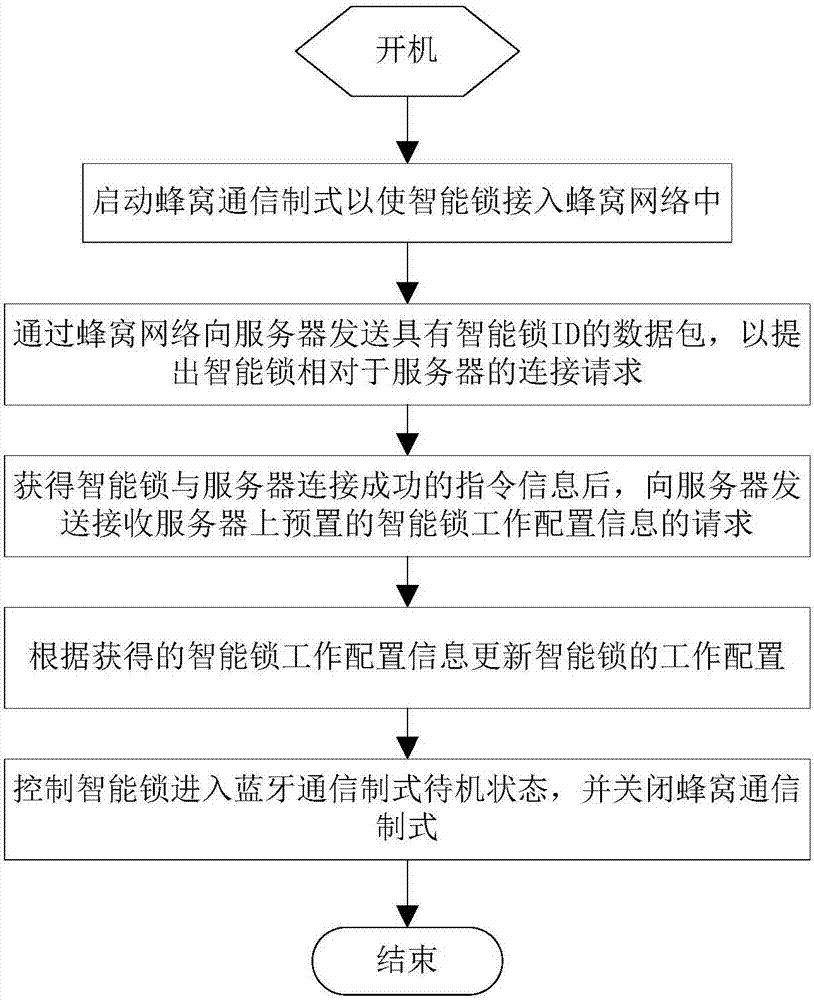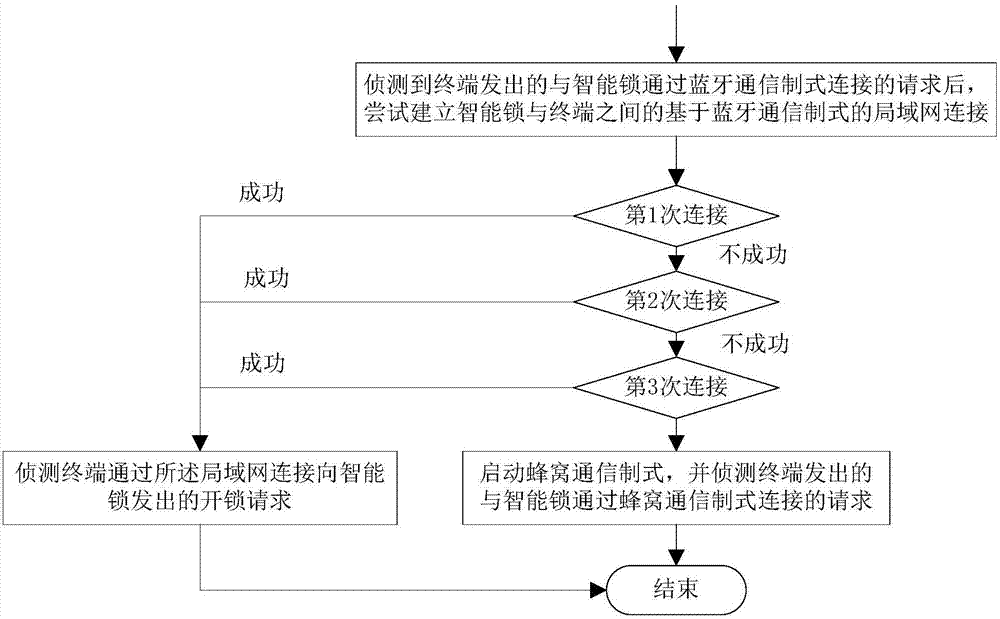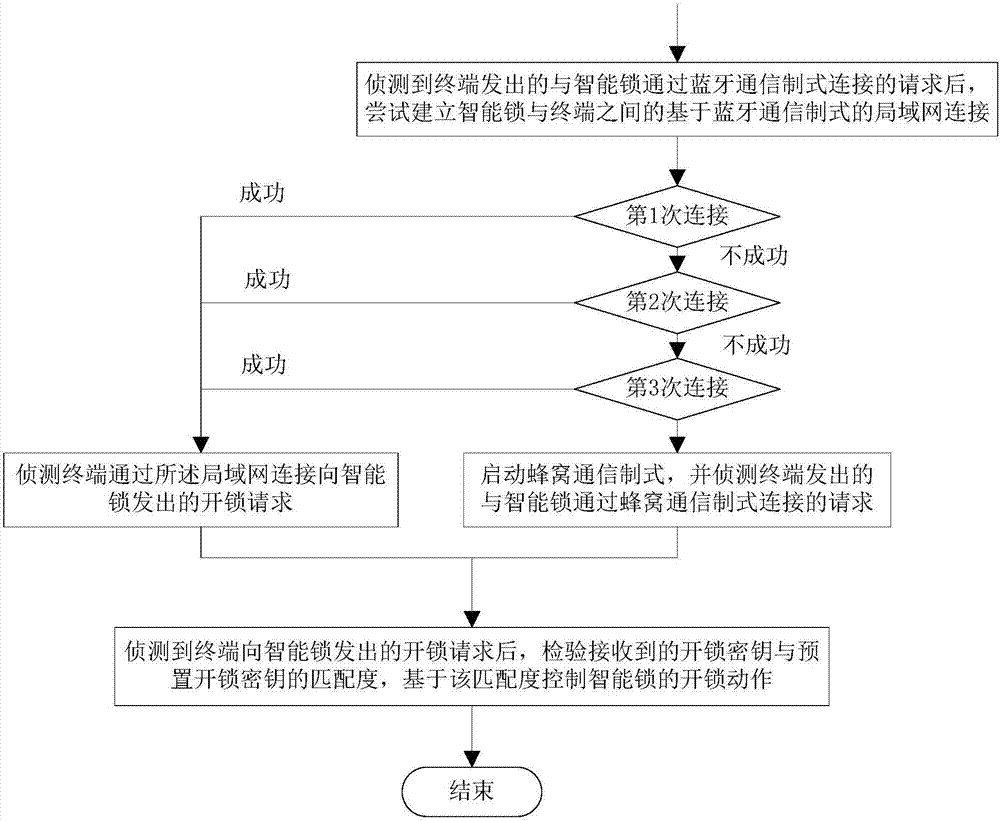Time sharing communication method for intelligent lock of Internet of things with multi-communication system and intelligent lock of Internet of things
A technology of multiple communication systems and communication methods, applied in the field of IoT smart locks, can solve the problem of high power consumption of IoT smart locks, and achieve the effects of improving the success rate of unlocking, reducing standby power consumption, and reducing maintenance costs.
- Summary
- Abstract
- Description
- Claims
- Application Information
AI Technical Summary
Problems solved by technology
Method used
Image
Examples
Embodiment 1
[0056] see figure 1 The time-sharing communication method for the Internet of Things smart lock with multiple communication systems disclosed in Embodiment 1 mainly includes the following steps S101 to S105, and these steps are preferably executed after the smart lock is turned on.
[0057] S101. Start the cellular communication system to enable the smart lock to access the cellular network.
[0058] The cellular network in step S101 may be 2G cellular network as an example, but is not limited to 2G cellular network.
[0059] S102. Send a data packet with the ID of the smart lock to the server through the cellular network, so as to propose a connection request of the smart lock to the server.
[0060] The server in step S102 may specifically refer to a background management server of the Internet of Things, which can centrally manage multiple smart locks. The smart lock ID refers to the identity of the smart lock, which may specifically be an identification code.
[0061] S...
Embodiment 2
[0069] see figure 2 The time-sharing communication method of the IoT smart lock with multiple communication systems disclosed in the second embodiment is further designed on the basis of the first embodiment, that is, the second embodiment also includes steps S106 and S107.
[0070] S106. After detecting the request sent by the terminal to connect with the smart lock through the Bluetooth communication standard, try to establish a LAN connection based on the Bluetooth communication standard between the smart lock and the terminal.
[0071] S107. If the instruction to successfully establish the LAN connection between the smart lock and the terminal is obtained within the preset number of times, then further detect the unlocking request sent by the terminal to the smart lock through the LAN connection; otherwise, start the cellular communication system and detect The request sent by the terminal to connect with the smart lock through the cellular communication system.
[0072]...
Embodiment 3
[0075] see image 3 The time-sharing communication method for the IoT smart lock with multiple communication systems disclosed in the third embodiment is further designed on the basis of the second embodiment, that is, the third embodiment also includes step S108.
[0076] S108. After detecting the unlocking request sent by the terminal to the smart lock, check the matching degree between the received unlocking key and the preset unlocking key, and control the unlocking action of the smart lock based on the matching degree.
[0077] In step S108, the detected unlock request can be sent through the Bluetooth communication system or the cellular communication system, depending on whether the terminal is connected to the smart lock through the Bluetooth communication system or connected to the smart lock through the cellular communication system. . The unlock key received may be sent by the terminal to the smart lock, or manually input by the user.
[0078] Generally speaking, ...
PUM
 Login to View More
Login to View More Abstract
Description
Claims
Application Information
 Login to View More
Login to View More - R&D Engineer
- R&D Manager
- IP Professional
- Industry Leading Data Capabilities
- Powerful AI technology
- Patent DNA Extraction
Browse by: Latest US Patents, China's latest patents, Technical Efficacy Thesaurus, Application Domain, Technology Topic, Popular Technical Reports.
© 2024 PatSnap. All rights reserved.Legal|Privacy policy|Modern Slavery Act Transparency Statement|Sitemap|About US| Contact US: help@patsnap.com










